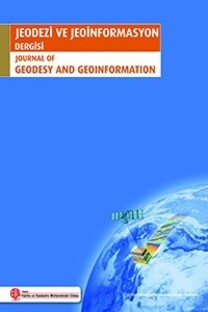Üç Boyutlu Kent Modellerinde Ayrıntı Düzeyi LoD Kavramı
3B kent modelleme, ayrıntı düzeyi LoD, kartografya, 3B coğrafi bilgi sistemi CBS, mekansal veri
Level of Detail LoD Concept in Three Dimensional City Modeling
3D city modeling, level of detail LoD, cartography, 3D geographic information system GIS, spatial data,
___
- BUCHHOLZ H., DÖLLNER J., NIENHAUS M. and KIRSCH F.: Real-Time Non-Photorealistic Rende- ring ring of 3D City Models, Proceedings of The 1st International Workshop on Next Generation 3D City Models, Bonn, Germany, 21-22 June 2005.
- DÖLLNER J. and ASCHE H.: Geoinformation Science at The University of Potsdam, 4th International Symposium on LBS and Telecartography, Hong Kong, 8-10 November 2007.
- DÖLLNER J., BAUMANN K. and BUCHHOLZ H.: Virtual 3D City Models as Foundation of Complex Urban Information, CORP 2006 & Geomultimedia06, Vienna, Austria, 13-16 February 2006.
- DÖLLNER J. and BUCHHOLZ H.: Continuous Level- of-Detail Modeling of Buildings in 3D City Models, Proceedings of ACM GIS 2005, pp. 173-181, Bremen, Germany, 4 - 5 November 2005.
- GRÖGER G., KOLBE T. H.DREES R., KOHLHAAS A., MÜLLER H., KNOSPE F., GRUBER U. and KRAUSE U.: Das Interoperable 3D-Stadtmodell der SIG 3D der GDI NRW. Version 2, 10 May 2004, www.ikg.uni-bonn. de/fileadmin/sig3d/pdf/Handout_04_05_10.pdf.
- GRÖGER G., KOLBE T. H. and CZERWINSKI A.: Candidate OpenGIS® CityGML Implementation Specification (City Geography Markup Language), Open Geospatial Consortium, Inc., OGC 06-057r1, 2006, http://www.opengeospatial.org/standards/gml.
- KOLBE T. H.: Interoperable 3D Visualisierung-3D Web Map Server. KS Band9 Der XFaktor-Mehrwert für Geodaten und Karten, Bonn, pp. 130-140, 2004.
- MENG F. and FORBERG A.: 3D Building Generalisation, In: Challenges in the Portrayal of Geographic Information: Issues of Generalisation and Multi Scale Representation, Chapter 11, Elsevier, 2006.
- RAMOS F., SIRET D. and MUSY M.: A 3D GIS for Managing Building Rehabilitation Process, proceedings of The 12th International Conference on Geoinformatics, Gavle, Sweden, 7-9 June 2004.
- SCHILCHER M., ROSCHLAUB R. and GUO Z.: Vom 2D- GIS zum 3D-Stadtmodell Durch Kombination von GIS, CAD und Animationstechniken, Proceedings ACS’98, Frankfurt, Germany, CD ROM, 12 - 14 November 1998.
- YÜCEL M.A. ve SELÇUK, M.: 3D City Modeling through CityGML International Symposium on Modern Technologies, Education and Professional Practice in Geodesy and Related Fields, Sofia, Bulgaria, 6 - 7 November 2008.
- ISSN: 2147-1339
- Yayın Aralığı: Yılda 2 Sayı
- Başlangıç: 2012
- Yayıncı: TMMOB Harita ve Kadastro Mühendisleri Odası
Doğal Afetlerin Kentsel ve Bölgesel Planlamada Yeri
Geçiş Eğrisi Olarak 4.Dereceden Parabol
Eşdeğerlik İlkesine Dayalı Arsa Düzenlemesinde Taşınmaz Değerlerinin Belirlenmesi
Yeni Nesil Ölçme Sistemi ve Evrik GNSS
Ali Kazım TELLİ, Atınç PIRTI2, R. Gürsel HOŞBAŞ2
